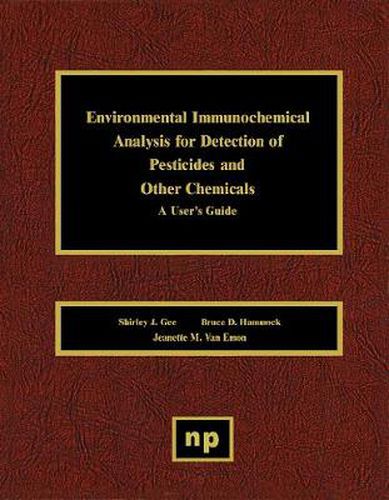Readings Newsletter
Become a Readings Member to make your shopping experience even easier.
Sign in or sign up for free!
You’re not far away from qualifying for FREE standard shipping within Australia
You’ve qualified for FREE standard shipping within Australia
The cart is loading…






This book is a tutorial designed to instruct the reader in use and application of immunochemical methods of analysis for environmental contaminants. A brief introduction describes basic principles and the advantages and disadvantages of the technology, and gives a listing of references which supply more detail. Preparation of the laboratory for use of this technology and the general scientific considerations prior to using the technology are discussed. Detailed step-wise procedures are given for analysis of selected analytes, triazine herbicides, carbaryl, paraquat, and p-nitrophenols, etc. In addition to the specific immunoassay methods, a series of support techniques necessary to perform immunochemical methods are described.
This book provides specific instruction for certain analytes, but also serves to familiarize the novice reader with many generic concepts needed to successfully utilize immunochemistry technology including: applications, sampling, sample preparation, extraction, cleanup, quality assurance, methods development and optimization, data handling and troubleshooting. It is not necessary for the reader to actually perform the immunoassays given in this user’s guide to obtain familiarity with these concepts. The guide is written so that the information presented can be applied to other immunoassays not given here. Thus, the strength of the guide is its universal applicability to immunoassay methods.
$9.00 standard shipping within Australia
FREE standard shipping within Australia for orders over $100.00
Express & International shipping calculated at checkout
This book is a tutorial designed to instruct the reader in use and application of immunochemical methods of analysis for environmental contaminants. A brief introduction describes basic principles and the advantages and disadvantages of the technology, and gives a listing of references which supply more detail. Preparation of the laboratory for use of this technology and the general scientific considerations prior to using the technology are discussed. Detailed step-wise procedures are given for analysis of selected analytes, triazine herbicides, carbaryl, paraquat, and p-nitrophenols, etc. In addition to the specific immunoassay methods, a series of support techniques necessary to perform immunochemical methods are described.
This book provides specific instruction for certain analytes, but also serves to familiarize the novice reader with many generic concepts needed to successfully utilize immunochemistry technology including: applications, sampling, sample preparation, extraction, cleanup, quality assurance, methods development and optimization, data handling and troubleshooting. It is not necessary for the reader to actually perform the immunoassays given in this user’s guide to obtain familiarity with these concepts. The guide is written so that the information presented can be applied to other immunoassays not given here. Thus, the strength of the guide is its universal applicability to immunoassay methods.